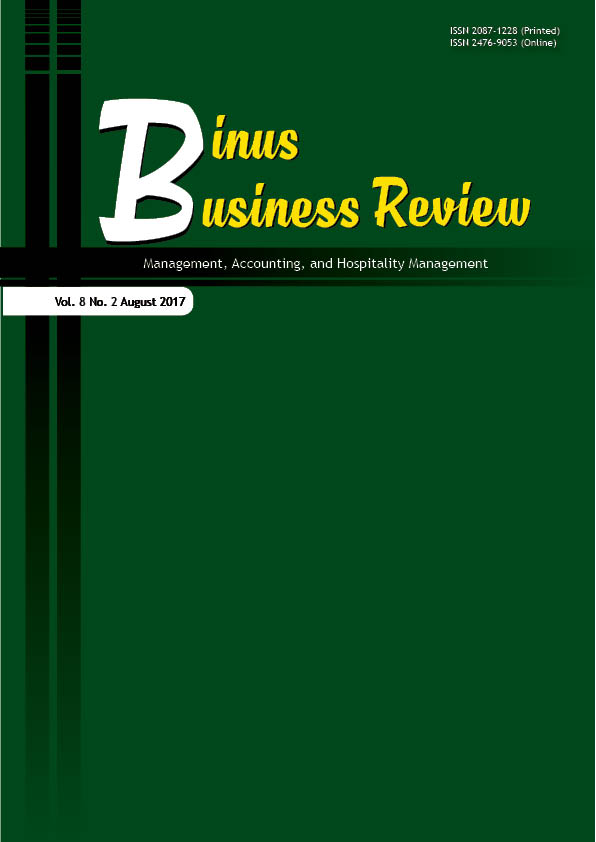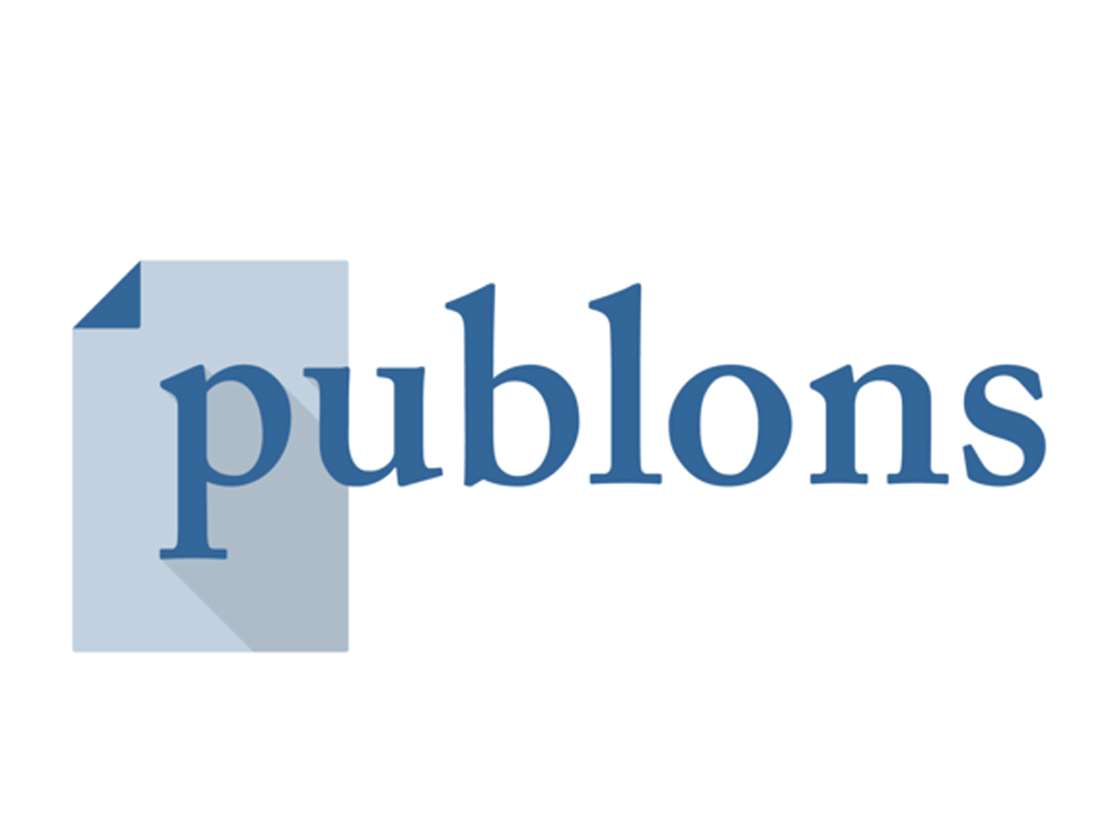Comparative Study of Store Image, Patronage Intention, and Retail Mix Elements between Alfamart and Indomaret in Jakarta
DOI:
https://doi.org/10.21512/bbr.v8i2.2066Keywords:
retail mix, store image, patronage intention, retail, convenience storeAbstract
This research is initiated by the phenomenon of competitive rivalry between the two giant convenience stores (Alfamart and Indomaret) in Indonesia. Alfamart must strive to improve the patronage intention of its customers so that they do not switch to its main competitor, Indomaret. The purpose of the research was to compare patronage intention and store image between Alfamart and Indomaret. Additionally, this research clarified the influence of the components in the retail mix, which were in-store promotion, store atmosphere, convenience, and merchandise between Alfamart and Indomaret in the formation of store image and its impact on patronage intention. The research methods were independent t-test and path analysis. Independent t-test aimed to find differences that occurred between Alfamart and Indomaret especially the differences in the components of the retail mix, store image, and patronage intention. Meanwhile, path analysis was to determine the effect of the retail
mix to store image and patronage intention. After processing the data, it is shown that both variables which are the components of the retail mix, store image, and patronage intention are surpassed by Alfamart. In Alfamart, there
are significant influences of in-store promotion, convenience, and merchandise to the store image and patronage intention. Similarly, in-store promotion, merchandise, and store image have direct influence on patronage intention.
Meanwhile, for Indomaret, there is the influence of the in-store promotion, convenience, and merchandise to store image and patronage intention with conditions that store atmosphere and store image have a direct influence on
the patronage intention.
References
Alfons, R. (2015). The key to successful in retail business is the acquisition of new customers and keep existing customers. In The 6th PPM Business Case competition forum in December 2015.
Anic, D. (2010). Attitudes and purchasing behavior of consumers in domestic and foreign food retailers in Croatia. Journal of Economics and Business, 28(1), 113-133.
Asuquo, E. E., & Igbongidi, P. B. (2015). Retail store merchandise assortment and display and their influence on consumer impulse buying behaviour in North-west Nigeria. Global Journal of Management And Business Research, 15(6), 1-7.
Baker, J., Parasuraman, A., Grewal, D., & Voss, G. B. (2002). The influence of multiple store environment cues on perceived merchandise value and patronage intentions. Journal of Marketing, 66(2), 120-141.
Chaiyasoonthorn, W., & Suksa-ngiam, W. (2011). Factors influencing store patronage: A study of modern retailers in Bangkok Thailand. International Journal of Trade, Economics, and Finance, 2(6), 520-525.
Deil, S. A. (2014). Indomaret vs Alfamart, pertarungan sengit raksasa ritel Indonesia. Retrieved from http://bisnis.liputan6.com/read/2062826/indomaret-vsalfamart-
pertarungan-sengit-raksasa-ritel-indonesia.
Dongjin, L. I., Shenghui, A. N., & Kai, Y. (2008). Exploring Chinese consumer repurchasing intention for services: An empirical investigation. Journal of Consumer Behaviour, 7(6), 448-460.
Hussain, R., & Ali, M. (2015). Effect of store atmosphere on consumer purchase intention. International Journal of Marketing Studies, 7(2), 35-43.
Jakpat. (2015). Minimarket shopping habit. Retrieved August 20th, 2016 from https://blog.jakpat.net/minimarket-shopping-habit-survey-report/.
Julianto, P. (2016). Aprindo: Industri ritel tumbuh sekitar 10 persen pada 2016. Retrieved from http://bisniskeuangan.kompas.com/
read/2016/12/28/172204826/aprindo.industri.ritel.tumbuh.sekitar.10.persen.pada.2016
Kumar, I., Garg, R., & Rahman, Z. (2010). Influence of retail atmospherics on customer value in an emerging market condition. Great Lakes Herald, 4(1), 1-13.
Levy, M., Witz, B., & Grewal, D. (2014). Retailing management (9th ed.). New York: McGraw-Hill Education.
Madaan, K. V. S. (2009). Fundamentals of retailing. New York: Tata McGraw-Hill Education.
Nazir, S., Tayyab, A., Sajid, A., Rashid, H., & Javed, I. (2012). How online shopping is affecting consumers buying behavior in Pakistan? International Journal of Computer Science Issues, 9(3), 486-495.
Nel, D., Gerber-Nel, C., & Stanford, C. (2005). Introduction
to retailing. Cape Town: Juta & Co.
Oxford Business Group. (2015). Global retailers flock to the Indonesian market. Retrieved from http://www.oxfordbusinessgroup.com/analysis/chainlinks-
global-retailers-flock-market-spite-stricterregulations
Reimers, V. (2014). A consumer definition of store convenience (finally). International Journal of Retail & Distribution Management, 42(4), 315-333.
Shamout, M. D. (2016). The impact of promotional tools on consumer buying behavior in retail market. International Journal of Business and Social Science, 7(1), 75-85.
Wakefield, K. L., & Barnes, J. H. (1996). Retailing hedonic
consumption: A model of sales promotion of a leisure service. Journal of Retailing, 72(4), 409-427.
Yoo, S., & Chang, Y. (2005). An exploratory research on the store image attributes affecting its store loyalty. Seoul Journal of Business, 11(1), 19-41.
Downloads
Published
How to Cite
Issue
Section
License
Authors who publish with this journal agree to the following terms:
a. Authors retain copyright and grant the journal right of first publication with the work simultaneously licensed under a Creative Commons Attribution License - Share Alike that allows others to share the work with an acknowledgment of the work's authorship and initial publication in this journal.
b. Authors are able to enter into separate, additional contractual arrangements for the non-exclusive distribution of the journal's published version of the work (e.g., post it to an institutional repository or publish it in a book), with an acknowledgment of its initial publication in this journal.
c. Authors are permitted and encouraged to post their work online (e.g., in institutional repositories or on their website) prior to and during the submission process, as it can lead to productive exchanges, as well as earlier and greater citation of published work.
USER RIGHTS
All articles published Open Access will be immediately and permanently free for everyone to read and download. We are continuously working with our author communities to select the best choice of license options, currently being defined for this journal as follows: Creative Commons Attribution-Share Alike (CC BY-SA)



























